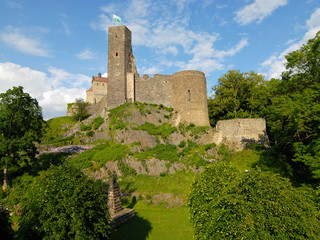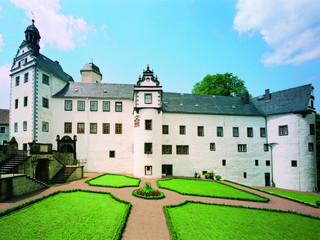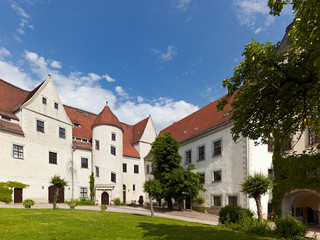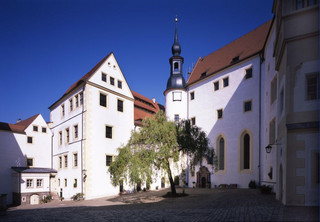From dungeon to penitentiary up to present-day correctional facility – the history of imprisonment has changed tremendously. Crime has existed for as long as mankind has, not so imprisonment. With Christianity contrition takes the place of vengeance, and the first prisons emerge in the monasteries. Since the 19th century, imprisonment has also been about resocializing prisoners.
But retrace the development for yourself!
Stolpen Castle (A)
Apart from penitentiary, imprisonment and sentences to hard labor, confinement in a fortress also existed officially until 1953. The detainee was held in strict custody in comfortable rooms and was given good food – of course, for the accused from the higher society. Confinement in a fortress was not regarded to be discrediting. One of the most famous captives held at a fortress was Countess Cosel: once celebrated mistress to Augustus the Strong, she fell to disgrace in 1712 after having interfered with politics too much. For almost half a century, until her death in 1765, Anna Constantia Imperial Countess of Cosel had to stay banished behind the walls of the castle. The premises inhabited by the Countess then demonstrate her life in a newly designed permanent exhibition.
Further to Station B - Lauenstein Castle, ca. 45 km


Lauenstein Castle (B)
Resting high on a steep rock, Lauenstein Castle towers picturesquely over the Mueglitz River valley – a true gem of Saxon Renaissance architecture. A part of the castle served as prison for many years. When, in 1853, the Lauenstein Royal Local Court moved in, several detention cells and a guardroom were installed. They remind us of penal correction of bygone times when detainees were still kept in strict solitary confinement. The main has been reconstructed and restored comprehensively over the past three decades. It also houses the Eastern Ore Mountains Museum.
Further to Station C - Dresden Fortress, ca. 42km
Dresden Fortress (C)
Later widely famed as Meissen china or also known as white gold. The buildings of the present-day museum of the Dresden Fortress are part of the earliest fortification of a German town as a bastion, erected between 1545 and 1555. Young Duke Moritz had chosen this way of fortification, which had only just been developed in northern Italy, in order to protect his residence in the most up-to-date way from artillery attacks: the wide walls were built to resist the cannonballs of besiegers and to position defense guns.
Further to Station D - Nossen Castle, ca. 34 km

Nossen Castle (D)
The walls and towers of Nossen Castle dominate the appearance of the small town of Nossen located at the heart of Saxony. Since 1630, the bailiff, head of local administration and jurisdiction, had his seat there. In the course of the centuries, it was extended by the seat of the local court, the bursary, the judiciary with the court office and dungeons. There is still one in the southern Lips Tullian Tower that had once held a prominent inmate: a member of the »Black Guard« - one of the most infamous robber gangs in Saxony. Old instruments of torture are testimony to the harsh practices of bygone jurisdiction.
Further to Station E - Colditz Castle, ca. 47 km
Colditz Castle (E)
During World War II, the castle became a POW camp for officers of the Allied Forces. It was deemed escape-proof for its location on a steeply dropping rock and its premises all being fenced in by barbed wire, heavily guarded and illuminated by searchlights. Despite the POWs’ comparably casual daily routine of sports and theater, music and languages, about 300 attempts of escape were recorded. The 30 successful ones are present-day legends of military history. The castle later became known throughout the world by Pat Reid’s book »The Colditz Story« and the movie of the same title. The old battlement with its mighty walls, the Princes’ House, the Renaissance portal of the Trinity Church, the building structure of the tower with its dome-shaped hood make up an impressive outline.

